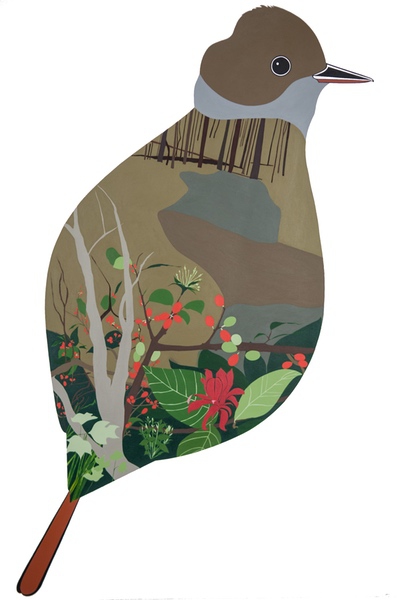
![]()
Spicebush
Early one morning in the summer of 2010, I arrived at the Featherbed Lane Bird Banding Station in the Sourland Mountains of New Jersey. It was a drought year. Hannah Suthers, the head field biologist had brought twelve Spicebush seedlings to plant far into the forest. We dug twelve holes in the dry, hard soil and separately fenced in each of the seedlings. Hannah nurtured the plants all summer, every two days carrying in one gallon of water for each plant. All twelve plants survived and last November 2012, I noticed some twigs had small, red buds growing. Invasive Japanese Stiltgrass has grown all around the Spicebush seedlings in the forest.
A parable for the environment, Hannah cares deeply about the life of birds and the habitat of old and new forest. I directly participated in restoring the Spicebush in the understory. The fruit of which is a food source for birds and other animals in this deer ravaged terrain.
The Spicebush is an understory plant often found beneath the Yellow Poplar. It is an important host plant to butterflies in the Swallowtail family, namely the Spicebush Swallowtail. Several kinds of fungi grow among the roots of Spicebush exchanging nutrients with the shrub. The red berries are the Spicebush drupes. The Great Crested Flycatcher eats the fruits of the Spicebush.